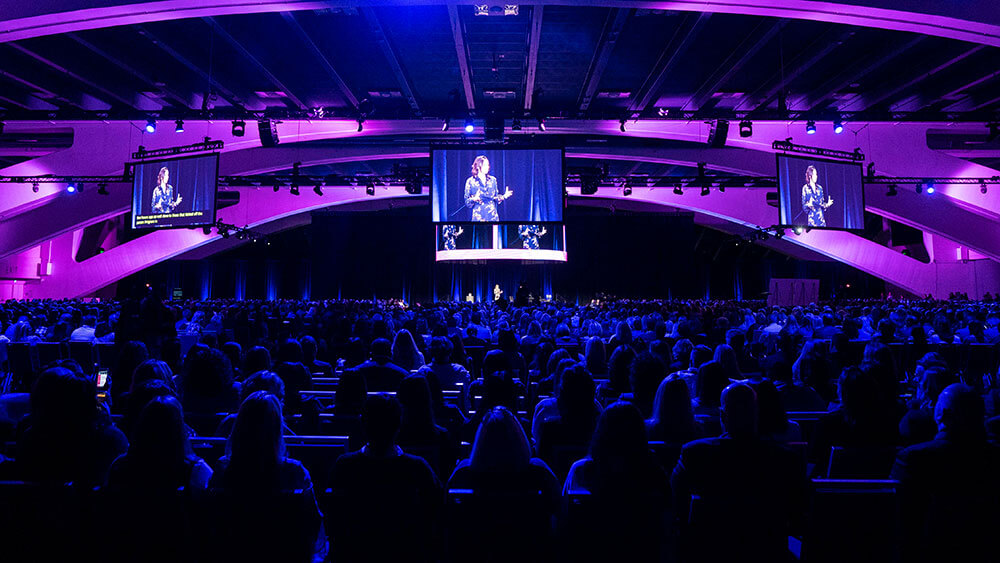
Using behavioral science may help planners get buy-in for their innovative event ideas — like those often presented at Convening Leaders. (Jacob Slaton Photography)
Ever hear of the behavioral science principle loss aversion? Very simply, it means that we are more motivated to avoid a loss than to experience a comparable gain. To see how loss-averse event professionals are, Zarak Khan, behavioral innovation director at Maritz, decided to do a quick study among participants at his Convening Leaders 2020 session, “Using Behavioral Science to Increase Engagement,” on Jan. 6.

Zarak Khan
It wasn’t just random curiosity that motivated Khan, who wrote a blog post about his little experiment on Maritz’s People Science site. He said that he is often approached by people after he speaks at sessions who say that they struggle with getting buy-in for their innovative ideas. Khan wondered: What if they used the loss-aversion principle to frame discussions about trying new ideas? In other words, he said, to highlight the risks of inaction rather than what could be gained by trying a new initiative.
So he split the audience into two groups (randomized by the last digit of their phone number) and presented them both with the same scenario: Imagine that you are planning an annual event and you suspect that attendance is going to go down by 6,000 people. You are considering two ideas that could help with this group of 6,000. Assume that the exact estimates of the outcomes of the ideas are as follows:
Group 1 got the message with a positive framing
- If Idea A is adopted, 2,000 of those people will still attend.
- If Idea B is adopted, there is a one-third probability that all 6,000 people will still attend and a two-thirds probability that zero people will attend.
Group 2 got the message with a negative framing
- If Idea 1 is adopted, 4,000 people will not attend.
- If Idea 2 is adopted, there is a one-third probability that all 6,000 people will attend and a two-thirds probability that zero people will attend.
“What we’re looking for here is if the framing shifts people towards taking a risk or not,” Khan writes. “It’s important in an innovation context because people often view new ideas as more risky.”
The Results
Sixty-six percent of Group 1 chose the safe-bet option which was positively framed — 2,000 people will still attend — vs. 48 percent of Group 2, when it was negatively framed — 4,000 people will not attend.
Conversely, the risky option — remember, this was worded nearly identically for both groups — was chosen by only 34 percent of Group 1, which had the more positive framing for the first safe-bet option. The riskier option was the more popular choice for Group 2: 52 percent chose it.
Khan writes that the results correspond with his thinking that organizations often “put off taking risks for too long in part because, when things are steady-state, they evaluate decisions with that more positive frame. It’s only once the situation becomes dire that they start to evaluate decisions with the negative frame and take bold action. At which point it can be too little, too late.”
With all due respect to Norman Vincent Peale, when it comes to presenting a potentially risky new idea for your next event, you may be better off using the power of negative thinking.
Michelle Russell is editor in chief of Convene.

